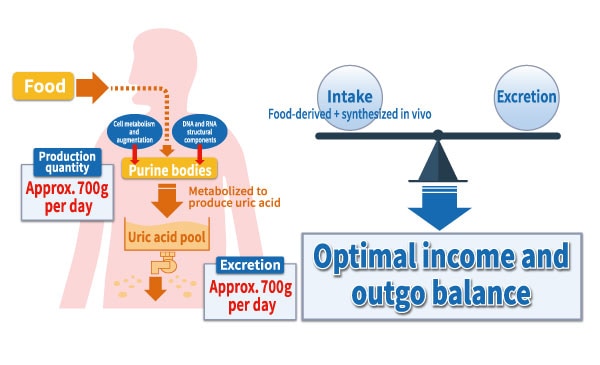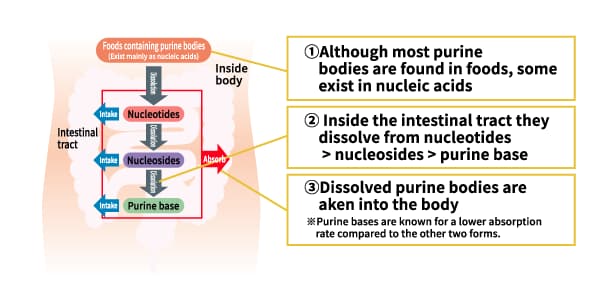|
Top page > Forefront of lactic acid bacteria research > Information on PA-3 lactic acid bacteria > What are purines?
What are purines?Why are purines needed?Many people imagine that purines are bad for the body. However, as they are a component of the genes that make up the cells of living organisms, purines are essential for sustaining our normal biological activities. While we take in purines from our diets, 80% (about 500 mg per day) of all purines that we use are internally produced by our own bodies. The purines in our bodies are used for cellular metabolism and proliferation, while any unused purines are discharged through urination as uric acid. While purines are crucial for our biological activities, consuming too much purine would not only increase the serum urate concentration to an undesired level but also raise the risk of hyperuricemia and gout.
Digestion of purinesMost of the purines found in foods exist in the form of nucleic acids. When those nucleic acids are consumed and reach the intestinal tract, they are broken down into nucleotides, which are subsequently broken down into nucleosides and purine bases. Purines are absorbed into the body during this digestion process. Compared to nucleotides and nucleosides, purine bases are considered to be more difficult to be absorbed into the body.
|





